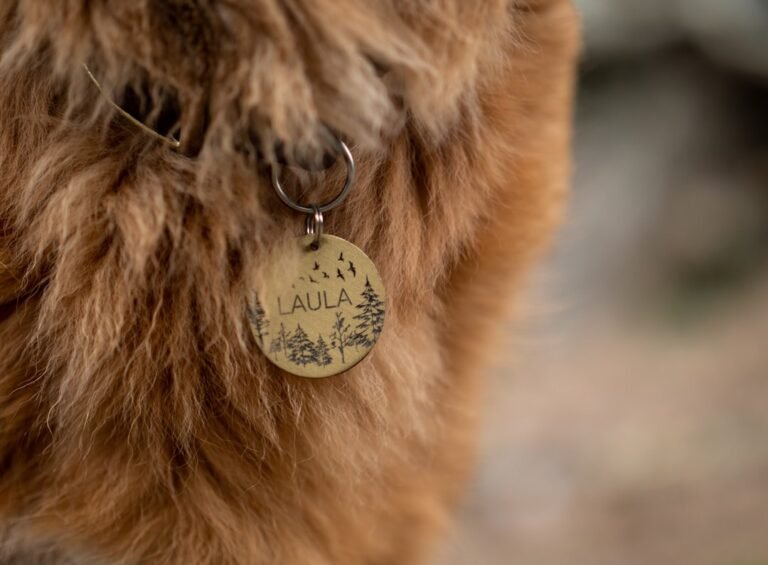Domain security and brand protection are essential for companies of all sizes in the current digital era. Your domain name is an integral part of your brand identity and serves as more than just a web address. It has to do with how clients discover and identify your company online. For this reason, it is crucial to safeguard your domain against misuse, hijacking, and unauthorized access.
Key Takeaways
- Domain security and brand protection are crucial for safeguarding your online presence and reputation.
- Select a domain name that is both strong and unique to make it harder for cybercriminals to impersonate your brand.
- Enable two-factor authentication to add an extra layer of security to your domain account.
- Keep your domain registration information up to date to ensure that you receive important notifications and renewal reminders.
- Use a reliable and secure domain registrar to minimize the risk of security breaches and unauthorized access to your domain.
Keeping your brand credible and trustworthy also depends on domain security. Your reputation may suffer, your customers may stop trusting you, and you may even suffer financial losses if your domain is compromised. Secure domain registration is also necessary to defend your website against online dangers like malware injections, phishing scams, and other nefarious endeavours. You may protect your online presence and uphold the integrity of your brand by being aware of the significance of domain security and brand protection. Maintaining the integrity of your online presence also benefits from ensuring domain security and brand protection. Safeguarding your domain against unwanted access, exploitation, or seizure is crucial.
Your domain name is a component of your brand identity in addition to being your web address. It’s how clients discover and identify your company on the internet. For this reason, safeguarding your domain against abuse, hijacking, or unwanted access is crucial. Keeping your brand credible and trustworthy also depends on domain security. A compromised domain may result in diminished customer confidence, harm to your online reputation, and possible financial losses.
Secure domain registration is also necessary to defend your website against online dangers like malware injections, phishing scams, and other nefarious endeavours. Knowing the value of domain security and brand protection will enable you to take preventative action to protect your online presence & uphold the integrity of your brand. The first step in guaranteeing domain security and brand protection is choosing a powerful & distinctive domain name. Rememberability, relevance to your company, & ease of confusion with other domain names are all indicators of a strong domain name. It ought to be exclusive to your brand and free from infringement on any already-existing copyrights or trademarks.
Cybersquatting is the practice of people registering domain names that are similar to well-known brands with the intention of making money off of them. You can lessen this risk by selecting a strong & distinctive domain name. Also, establishing brand recognition & trust with your target audience can be facilitated by a powerful and distinctive domain name. Make sure the domain name you select is not already in use or has any bad associations by doing extensive research. You can establish a strong basis for domain security and brand protection by devoting time and effort to choosing a powerful and distinctive domain name. It’s crucial to take your company’s & industry’s relevance into account when selecting a powerful and distinctive domain name.
A powerful domain name ought to convey the essence of your company as well as the goods and services you provide. In order to make it convenient for users to visit your website, it should be simple to remember and type. Also, having a distinctive domain name makes it easier for customers to recognize your brand from that of your rivals. Also, since they can be difficult for users to remember & type correctly, hyphens and numbers should not be used in domain names.
A powerful online presence can be established and the possibility of brand infringement or confusion can be decreased by selecting a distinctive and powerful domain name. Thus, the groundwork is laid for efficient brand and domain security. By requiring users to present two forms of identification in order to gain access, two-factor authentication (2FA) increases the security of your domain account. This usually involves the user having something (like a mobile device for receiving verification codes) and something they know (like a password). The possibility of unwanted access or account takeover can be greatly decreased by turning on 2FA for your domain registrar account. The second form of authentication is still required for account access, even in the event that an attacker manages to obtain your login credentials.
This extra layer of protection can aid in stopping illegal modifications or transfers of your domain’s DNS settings. You can strengthen the security of your domain account and shield it from potential attacks by putting 2FA into practice. You may increase security & thwart unwanted access by turning on two-factor authentication (2FA) for your domain registrar account. Before being granted access, users of 2FA must provide two forms of identification, usually something they know (like a password) and something they have (like a mobile device for receiving verification codes).
You can greatly lower the chance of unwanted access or account takeover by turning on 2FA for your domain registrar account. An attacker would still require the second form of authentication in order to access your account, even if they were to succeed in getting their hands on your login credentials. This extra security measure can aid in stopping illegal transfers or modifications to your domain’s DNS settings. Your domain account’s security can be improved & shielded from potential threats by putting 2FA into place. To preserve domain security and protect your brand, you must keep your domain registration details current.
Contact details, administrative contacts, & payment details are all included in your registration information. Ensuring the accuracy and currency of this information is crucial at all times. Missed renewal notifications, the inability to transfer the domain, and in severe circumstances, even the loss of ownership, can result from inaccurate or out-of-date registration information. Also, maintaining the accuracy of your registration details ensures that you get crucial notifications from your domain registrar about any modifications or updates to your account. You can keep control of your domain and prevent possible problems by routinely checking & updating the information you provided when registering it.
Maintaining current domain registration details is essential to preventing future problems like missing renewal notifications or ownership loss. Details including your payment method, administrative contacts, and contact information are all part of your registration data. It is crucial to always make sure that this information is correct and up to date. A domain’s incapacity to be transferred, missed renewal notifications, or, in the worst circumstances, ownership loss can all result from inaccurate or out-of-date registration data.
Also, maintaining current registration details makes it possible for your domain registrar to notify you of any updates or changes to your account, which is helpful. You can keep control of your domain & prevent possible problems by routinely checking & updating the information you provided when registering it. For your domain to be secure, selecting a trustworthy and secure domain registrar is essential. Strong security measures are in place at a trustworthy registrar to guard against threats, illegal access, and data breaches.
Factors like customer support, security procedures, reputation, and extra security features are crucial to take into account when choosing a domain registrar. Seek out registrars that provide features like WHOIS privacy protection, DNSSEC (Domain Name System Security Extensions), SSL certificates, and recurring security audits. You can feel secure knowing that your domain is in good hands and that the necessary precautions are taken to protect it from potential security threats by working with a reputable & secure domain registrar. To guarantee the security of your domain, you must use a trustworthy and secure domain registrar.
To guard against illegal access, data breaches, and other possible threats, a respectable registrar will have strong security measures in place. The reputation, security procedures, customer service, and extra security features provided by a domain registrar are all important considerations. Seek out registrars that provide services like frequent security audits, WHOIS privacy protection, SSL certificates, & DNSSEC (Domain Name System Security Extensions). You can feel secure knowing that your domain is in good hands and that the necessary precautions are taken to protect it from potential security threats by working with a reputable and secure domain registrar.
To ensure the security & integrity of your domain, you must routinely check for unauthorized changes. DNS setting adjustments, transfers to a different registrar, and ownership information changes are examples of unauthorized changes. By closely monitoring your domain settings and registration information, you can spot any unauthorized changes or suspicious activity fast.
Numerous registrars provide monitoring services that alert you to any modifications made to your registration details or domain settings. Setting up alerts for particular modifications or actions on your domain can also aid in the early detection of possible security risks. You can respond quickly to security issues and stop more harm by keeping an eye out for unauthorized changes to your domain.
To keep your domain secure and intact, you must routinely check for unauthorized changes. Unauthorized changes can include ownership details changes, transfers to a different registrar, and adjustments to DNS settings. You can rapidly spot any unauthorized changes or suspicious activity by closely monitoring your domain settings & registration information.
In order to keep you informed of any modifications made to your registration details or domain settings, many registrars offer monitoring services. Setting up alerts for particular modifications or actions on your domain can also aid in the early detection of possible security risks. You can respond quickly to any security issues & stop more harm by keeping an eye out for unauthorized changes to your domain.
One way to safeguard your brand identity & lower the danger of cybersquatting or brand infringement is to register variations of your domain name. Some variations of your primary domain name could be misspellings, hyphenated versions, plural forms, or alternative top-level domains (TLDs). You may stop others from making money off of your brand name or confusing consumers with confusingly similar-sounding domains by registering these variations. Also, registering different versions of your domain name gives you the freedom to keep control over your brand identity while growing your online presence and reaching new audiences.
While registering variations of your brand name, it’s crucial to take into account common misspellings or alternate spellings to account for all potential outcomes. In order to safeguard your brand identity and lower the possibility of cybersquatting or brand infringement, you should think about registering variations of your domain name. Some variations of your primary domain name could be misspellings, hyphenated versions, plural forms, or alternative top-level domains (TLDs).
By registering these variations, you can stop other people from making money off of your brand name or confusing consumers with similar-sounding domain names. You can also reach a larger audience and increase your online presence while keeping control of your brand identity by registering variations of your domain name. It is crucial to take into account frequently occurring misspellings or alternate spellings of your brand name when registering variations in order to account for all potential outcomes.
In conclusion, keeping your domain secure is critical to safeguarding the reputation of your company and keeping clients confident. You can successfully protect your online presence from potential threats and ensure the integrity of your brand identity by realizing the importance of domain security and taking proactive measures like selecting a strong and unique domain name, enabling two-factor authentication, updating registration information, using a reputable registrar, keeping an eye out for unauthorized changes, and registering variations of your domain name. To further minimize risks, it’s essential to keep up with security updates and best practices, as well as to update your domain’s security measures on a regular basis. By making domain security a top priority, you can reduce the possibility of phishing attempts, illegal access, domain hijacking, and other malicious activities that could damage your brand’s reputation and interfere with your online business operations. In the end, making an investment in domain security is an investment in your company’s credibility and long-term success.
Looking to master the art of domain investing in 2024? Check out this comprehensive guide on FindTLD that provides valuable insights and strategies for maximizing your domain investments. Whether you’re a seasoned investor or just starting out, this article offers expert advice and practical tips to help you navigate the ever-evolving domain market. Learn more about how to make the most of your domain investments and stay ahead of the game.
FAQs
What is domain security?
Domain security refers to the measures taken to protect a domain name from unauthorized access, misuse, and cyber threats. This includes protecting the domain from unauthorized transfers, hijacking, and other malicious activities.
Why is domain security important?
Domain security is important because a domain name is a crucial part of a brand’s online identity. A secure domain helps protect the brand’s reputation, customer trust, and online presence. It also helps prevent unauthorized use of the domain for malicious purposes.
What are some tips for securing a domain?
Some tips for securing a domain include using strong and unique passwords, enabling two-factor authentication, keeping domain registration information up to date, and regularly monitoring the domain for any unauthorized changes.
How can I protect my brand through domain security?
Protecting your brand through domain security involves securing not only the domain name itself, but also related subdomains, email accounts, and other online assets associated with the brand. This helps prevent brand impersonation, phishing attacks, and other forms of online fraud.
What are some common domain security threats?
Common domain security threats include domain hijacking, unauthorized transfers, DNS hijacking, phishing attacks using look-alike domains, and email spoofing. These threats can result in financial loss, damage to brand reputation, and loss of customer trust.
What is WHOIS privacy protection?
WHOIS privacy protection is a service offered by domain registrars to protect the personal information of domain owners. It replaces the owner’s contact details in the WHOIS database with the registrar’s contact information, helping to prevent spam, identity theft, and other privacy-related issues.
How can I prevent domain hijacking?
To prevent domain hijacking, it is important to use strong and unique passwords for domain registrar accounts, enable two-factor authentication, lock the domain to prevent unauthorized transfers, and regularly monitor the domain for any unauthorized changes.
What should I do if my domain is compromised?
If your domain is compromised, you should immediately contact your domain registrar to report the issue and take steps to regain control of the domain. This may involve changing passwords, updating security settings, and working with the registrar to investigate the compromise.
What role does SSL/TLS play in domain security?
SSL/TLS (Secure Sockets Layer/Transport Layer Security) certificates play a crucial role in domain security by encrypting data transmitted between a website and its visitors. This helps protect sensitive information such as login credentials, payment details, and personal data from interception and tampering.
How can I stay informed about domain security best practices?
To stay informed about domain security best practices, you can follow reputable cybersecurity blogs, subscribe to industry newsletters, attend webinars and conferences on cybersecurity, and regularly review updates from domain registrars and security organizations.



